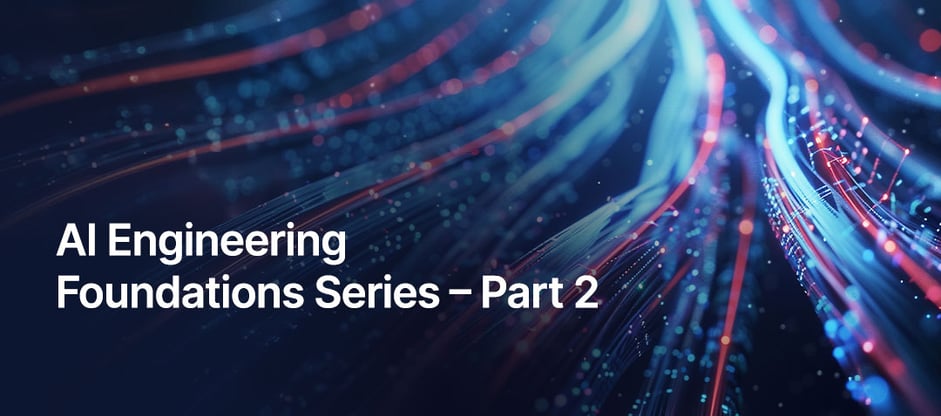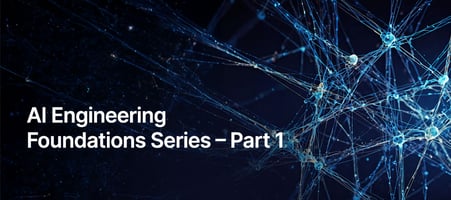From Pilots to Production – Unlocking AI Value at Scale

In the first part of this series, we established why AI Engineering is not just a technology challenge but more of a mindset shift, blending experimentation, uncertainty management, and continuous improvement with enterprise-grade design. However, recognizing this need for a mindset shift is just the beginning.
So, what’s the real test? Scaling.
While building a promising AI pilot is exciting, turning it into a production-ready system that creates measurable business value is where most organizations falter. This is especially true for modern Agentic AI systems, which are not just models, but autonomous, goal-driven software entities, capable of complex decisions, tool use, and learning over time.
Let’s explore why most enterprises go wrong and how a disciplined, phased AI engineering approach helps bridge the gap between innovation and impact.
Why AI Pilots Stall: Lessons from the Field
AI pilots often start in idealized environments. But scaling to real-world production brings messiness, unpredictability, and a need for trust and governance.
Here are the most common reasons why AI projects (especially agent-based ones) struggle to make it past the pilot stage:
1. No Clear Business Value or ROI Metrics: Too often, AI is deployed because it's “innovative,” not because it solves a quantifiable business problem. Without clear KPIs tied to cost savings, efficiency, or revenue, it’s hard to justify the leap to production.
Pilot success ≠ Business success. Without a tangible value thesis, even technically strong projects fade.
2. Mismatch Between Pilot Environment and Production Reality: Pilots are usually run in controlled sandboxes. But real data is messy. Real users behave unpredictably. Integration with core systems becomes difficult. Agentic AI compounds this by needing access to APIs, documents, and knowledge bases dynamically.
3. Lack of Robust Evaluation & Human-in-the-Loop Feedback: In production, AI needs to be observable, explainable, and monitored continuously. Agent performance should evolve based on real user feedback, edge cases, and drift. Without these feedback loops, performance stagnates or worsens.
4. Cross-Functional Misalignment: Successful production AI requires tight collaboration between business stakeholders, IT, data science, compliance, and operations. But pilots are often run in silos, leading to friction when scaling.
5. Insufficient Governance, Security, and Risk Controls: Enterprises operating in regulated sectors like healthcare or BFSI cannot put ungoverned agents into production. Auditing, explainability, bias detection, and fallback policies must be built-in from day one.
Scaling Agentic AI: A Phased Engineering Approach:
Based on our experience across healthcare, financial services, manufacturing, communications, and retail industries, we’ve distilled a three-phase AI engineering playbook to de-risk and accelerate the path from pilot to production:
Phase 1: Structured Pilot With HILP (Human-in-the-Loop Processing)
- Start with a real business problem (e.g. document triage, claims review, policy comparison).
- Use a simplified agent in a controlled environment.
- Instrument feedback: Track success/failure, token usage, task completion, latency.
- Incorporate business expert’s feedback at every decision point.
This validates the agent's behavior, utility, and trustworthiness.
Phase 2: Shadow Deployment or Assisted Execution
- Move the agent into production under close supervision: The agent acts, but a human approves.
- Introduce observability tooling (dashboards, alerts, model confidence scores).
- Connect to production data/API systems with controlled access and rollback.
- Start tracking business metrics: time saved, error reduction, throughput.
Think of this like “an agent in a training mode” that continuously learns from the environment and human operators.
Phase 3: Autonomous Operation with Guardrails & Governance
In this phase, the agent executes tasks end-to-end, within defined policy and risk boundaries.
- Fallbacks and escalation paths are implemented for uncertainty or failure.
- System is now integrated with enterprise AI platform: model registry, vector store, access control, performance monitoring.
- Focus on continuous retraining, feedback, and agent lifecycle management (like any software product).
Now, the AI becomes a first-class enterprise operator, not just a sidecar experiment.
Curated Checklist: Is This Use Case Ready for Production?
Here’s a quick framework to evaluate if an AI or agentic use case is ready to move from pilot to production:
|
Dimension |
Ready for Production If… |
|
Business Alignment |
Problem is linked to a measurable outcome (e.g. reduced cycle time by up to 30%) |
|
Data Readiness |
Sufficient quality, coverage, and access control of real-time or batch data is in place |
|
Agent Task Clarity |
Agent goals can be broken down into structured steps, even if execution is dynamic |
|
Human Oversight |
Feedback loop is available from domain users or SMEs |
|
Platform Integration |
Cloud infra, APIs, model serving, and logging mechanisms are in place |
|
Risk & Compliance |
Governance policies, auditability, and fallback behaviors are defined properly |
|
Monitoring & Evaluation |
Clear metrics (task success rate, errors, latency, hallucination rate) are defined and monitored |
Examples of Low-risk Starting Points for Agentic AI
- Healthcare: Auto-summarizing patient records for clinical trial eligibility
- Banking: Pre-screening KYC documents with fallback for human review
- Retail: Inventory discrepancy analysis from multi-store reports
- Manufacturing: Flagging anomalies in maintenance logs for planner review
These use cases are ideal because they are repeatable, data-rich, and supervised-friendly, making them perfect candidates for phase-wise scaling.
Scaling AI is an Engineering Discipline
As we established in Part 1 of the blog series, the AI Engineering mindset is about applying rigorous engineering principles, modularity, monitoring, and continuous improvement, to probabilistic systems. Moving from pilot to production is all about designing systems that are:
- Business-aligned
- Feedback-driven
- Governed by design
- Built to scale
In our work across industries, the most successful organizations don't think in terms of AI projects. They think in terms of AI products and platforms. They treat agents as evolving, governed digital workers. And they scale success by pairing human judgement with agentic execution, iteratively.
In the next part of our AI Engineering Foundations Blog Series, we’ll explore how to design an AI Operating Model that supports this scale, whether centralized, federated, or hybrid.

.webp?height=200&name=Covasant_Blog_Banner_With_Author%20(1).webp)


